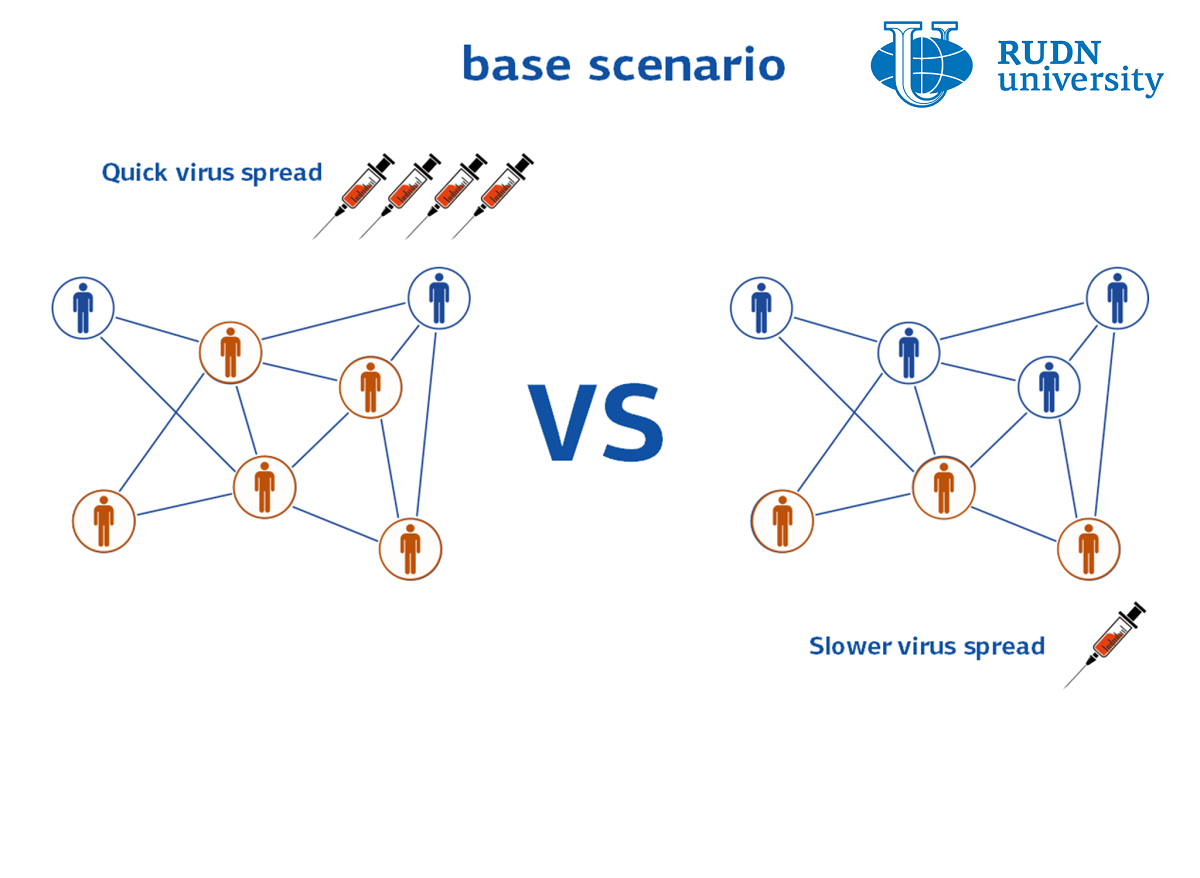RUDN University mathematician calculated the most effective vaccination strategy University
Within different groups of the population — for example, age or social — the epidemic spreads in different ways. Therefore, the overall rate of spread of the disease depends on the ratio of such groups in the population. The RUDN University mathematician, together with colleagues from India, Romania and France, built a mathematical model and found out how many people need to be vaccinated and how best to vaccinate. The calculations were carried out in a generalized form, so the results can be useful not only in the conditions of any epidemic or pandemic, including COVID-19.
“We studied a two-group epidemic model. The groups differ in the rate of transmission of the disease. Infection, the maximum and total number of infected depends on the ratio between the groups. We considered various strategies for distributing the vaccinated between the two groups and calculated what would be their outcome ”, - Doctor of Physical and Mathematical Sciences Vitaly Volpert, Director of the Interdisciplinary Research Center" Mathematical Modeling in Biomedicine “, RUDN University.
The model that mathematicians looked at describes two populations with different rates of infection and recovery. Mathematically, this model is expressed as a system of differential equations with four unknowns — the number of sick and healthy people in each of the two groups. The solution to these equations shows how many people in which group need to be vaccinated for the epidemic to subside. It is assumed that the vaccine itself is completely effective — after it it is impossible to get sick.
The results of the solution can be presented in the form of a graph — along the axes, the number of vaccinated in the first and second groups, and on the plane itself there is a closed figure: a triangle or a trapezoid. If the number of vaccinated in the first and second groups falls inside this figure, then the epidemic fades.
However, in real conditions, it is impossible to vaccinate the required number of people at once — vaccination is carried out in stages. This is due to both economic and social factors. In terms of mathematics, all these factors can be described in terms of the generalized “cost” of vaccination. To find out which vaccination strategy will be the most effective, the RUDN University mathematician solved the minimization problem — an integral equation that allows you to find the minimum of both the number of infected in each group and the cost of vaccination. Mathematicians tested four vaccination strategies. Each was carried out in five stages with the same total number of vaccines at each stage, but with a different ratio of vaccinated from the two groups. For all strategies, mathematicians determined how the total number of cases will change over time.
It turned out that the least effective strategy is “natural”, when people for vaccination are randomly selected evenly among the entire population. The following strategy turned out to be the most effective: at the first three stages, vaccinate approximately the same number of people from the group with a low infection rate and increase the number of vaccinated people from the second group several times, and vice versa at stages 4 and 5. These results are valid in the general case. However, depending on the characteristics of a particular disease, for example, with different mortality rates for different age groups, as in the case of COVID-19, the situation is reversed.
“In general, vaccination of the second group is more effective in terms of minimizing the number of infected. This conclusion could be expected since the rate of disease transmission in this group is higher. However, this conclusion may not be correct given the mortality in the two groups. Taking COVID-19 as an example, if we assume that the mortality rate among people over 60 is 10 times higher, then the total number of deaths decreases with a greater proportion of vaccinated in the first group, despite the fact that the infection rate in it is lower, ”- Dr. of Mathematical Sciences Vitaly Volpert, Director of the Interdisciplinary Scientific Center “Mathematical Modeling in Biomedicine” RUDN.
The results are published in the journal Applied Mathematics Letters.
Products derived from microalgae represent a cutting-edge development in the field of bioeconomy. The potential of this biological resource was discussed at the international research seminar “Foundations for a Green Sustainable Energy”, part of the BRICS Network University’s thematic group on “Energy”. The event was organized by the Institute of Ecology at RUDN University.
Ambassadors of Russian education and science met at a conference in RUDN University to discuss how they can increase the visibility of Russian universities and research organizations in the world, and attract more international students in Russia.
The international scientific seminar hosted by RUDN Institute of Ecology “Experience of participation in student organizations as a way to form career skills” united scholarship recipients of the International Student Mobility Awards 2024 and Open Doors, along with members of the scientific student society “GreenLab” and the professional student association “Kostyor (Bonfire)” shared their projects focused on environmental protection.
